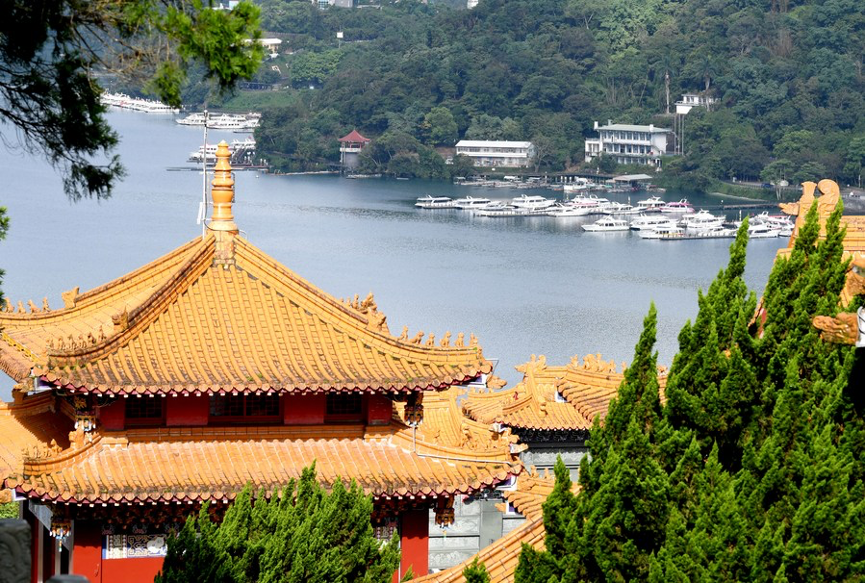
Editor’s note: CGTN’s First Voice provides instant commentary on breaking stories. The column clarifies emerging issues and better defines the news agenda, offering a Chinese perspective on the latest global events.
Known as a “pragmatic worker for Taiwan independence,” Lai Ching-te is adept at playing the “peace” card for his political ambitions. Lai’s pledge to maintain the “status quo” across the Taiwan Straits is, in essence, an attempt to pacify Washington in exchange for the latter’s support.
Lai previously made a bold claim, suggesting that achieving the goal of entering the White House would signify a major political victory for Taiwan’s leader. This statement appeared to cause some concern in Washington.
Lai recognized the U.S.’s preference for preserving the current situation and avoiding confrontation. Understanding that the U.S. favors a leader without a strong “Taiwan independence” agenda, he presented himself as a peace-oriented figure, aiming to ease concerns that his separatist goals could provoke tension in the Taiwan Straits.
For an opportunist like Lai, the U.S. is the master he aims to serve, while the people of Taiwan are merely pawns in his quest to better serve his lord. Lai is clear that “peace” is a word that his master is happy to hear.
‘Taiwan independence’ as true agenda
Beneath Lai’s facade as a “guardian of peace and development” lies his true agenda as a proponent of “Taiwan independence.”
The Chinese government has reiterated its determination for reunification. Regardless of changes in the situation on the island or who holds power, the fact that both sides of the Straits belong to one China cannot change.
However, Lai from the very beginning of his tenure has been actively advocating for “Taiwan independence,” posing a serious challenge to the one-China principle. Lai’s speech – under the guise of “building a democratic, peaceful, and prosperous new Taiwan” – is in essence a fresh attempt to stoke confrontation between the two sides of the Taiwan Straits.
China’s determination for reunification means it will take all necessary measures – including military ones – to safeguard its sovereignty and territorial integration. In this context, Lai’s repeated collusion with external forces for “Taiwan independence” has tremendously destroyed the prospect of peaceful reunification, pushing the region towards a real armed conflict.

Clearly, this is not what the people of Taiwan are ready to accept.
Fears of war among Taiwan society have, to some extent, contributed to its plunging birth rate. In 2023, the number of births on the island hit a record low of 135,571 – the fourth consecutive year with fewer births than deaths.
“The figures reflect the public’s fear (of a potential war across the Straits),” said Ma Ying-jeou, former chairman of the Chinese Kuomintang party, adding that young people are more willing to give birth if they are confident of the peace prospects across the Taiwan Straits.
Shouting “peace,”Lai’s stubborn pursuit of “independence” is the biggest threat to peace. To “ensure the world is without the fear of war breaking out” as Lai has urged in his inaugural address, the DPP giving up its independence ambition is the first step. But apparently, this is unlikely under Lai’s tenure. Lai’s commitment to keeping peace across the Taiwan Straits is merely lip service, attempting to mask his separatist inclinations.
The mainstream public aspiration in the Taiwan region is for peace and development, instead of war and recession. Lai’s so-called leading Taiwan “forward” is, in fact, bringing destruction to the region while relying on the support from the U.S. to realize his dream of “Taiwan independence.”
Discrediting the Chinese mainland’s efforts for reunification as “intimidating” Taiwan, Lai is instead the most dangerous turbulence in the region, sacrificing local people for his selfish separatism daydream.
(If you want to contribute and have specific expertise, please contact us at opinions@cgtn.com. Follow @thouse_opinions on Twitter to discover the latest commentaries in the CGTN Opinion Section.)
